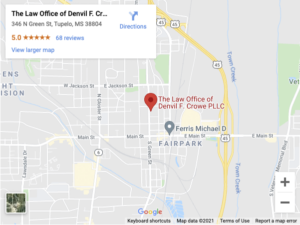Ten (10) Tips For Rebuilding Credit
There is Life After Bankruptcy!
Your ability to re-establish credit after filing bankruptcy is better than ever.
After your bankruptcy discharge, you will receive many solicitations from lenders offering to finance homes, vehicles, and credit cards.
And why not?
Bankruptcy gets rid of debt and getting rid of debt is the first step for re-building credit. Getting rid of some debt puts you in a better position to handle more credit.
In fact, many former clients have told us they started getting credit card offers within weeks after their bankruptcy case was done.
Here are some tips on how to rebuild your credit.
- Open a checking or savings account, start saving money. You will need money for down payments. The more money you can pay down on a purchase, the lower the interest rate you will get. Besides, lenders may look at how you handle a checking and savings account as an indication of whether or not you can responsibly handle money.
- Apply for store and gas credit cards that you would normally pay cash.
- Apply for a secured card where you deposit cash and charge against it. Make sure you only apply for secured cards with a company that promises to report regularly to the major credit reporting agencies. The major credit reporting agencies are Equifax (www.equifax.com), Experian (www.experian.com), and TransUnion (www.transunion.com). They maintain your credit record. Think about it. What good does it do to get a secured card from a company that does not report to the major credit bureaus? Pay back advances in a timely fashion to build a track record of paying on time so that they will be reflected as positive marks on your credit report.
- Pay your utility bills and rent on time. After filing bankruptcy, building up a history of paying on time is crucial.
- Find a friend or relative to cosign for you on a loan and pay it on time. But be careful, if you don’t pay it or don’t pay it on time you will do significant damage to the credit record of the friend or relative who was kind enough to cosign for you.
- Look for car dealers and mortgage brokers that claim to be “bankruptcy friendly”. Buy a used car so you do not get hit with the depreciation that occurs during the first two years of a new car purchase.
- Stay away from payday loans and finance companies that are at high interest rates and are a “bad credit” trap. These outfits will suck you dry and leave you back in debt.
- Write a letter to each credit reporting agency explaining the circumstances that lead to your filing. You are allowed to submit up to 100 words of explanation to each credit reporting agency.
- Live within your means. If you don’t have the money, don’t spend it. If it helps, limit yourself to only what you need rather than buying everything you wanted whether you needed it or not. As a rough guideline, make sure your payments on consumer debts don’t exceed 20% of your expendable income after your costs for housing and a vehicle.
Pay your remaining debts left over from your bankruptcy on time. This is worth repeating. This includes things like non-dischargeable taxes, student loans, car loans, truck loans, and house mortgages. This is crucial if you want to reestablish your credit.
Make sure the information on your credit report is accurate. The best way to do this is to get an updated copy of your credit report. After filing bankruptcy, it’s probably a good idea to get an updated credit report every 6 months for a year or so. How do I get a copy of my credit report? The easiest way is to get it directly from one of the 3 major credit reporting agencies. Each of them offers a “3-in-1” credit report, which simply means a credit report containing all the information from each these of the agencies. The cost for the “3-in-1” credit report is $29.95. The best way to order your credit report is online. You can go to any of these websites: Equifax (www.equifax.com), Experian (www.experian.com) and TransUnion (www.transunion.com). There is also other valuable information on these websites, including information to help you understand your credit score, information on how to rebuild your credit, and information on how to fix any errors that may appear on your credit report.
Want even more information? One of the best resources about life and credit after bankruptcy is the book entitled “Bounce Back From Bankruptcy”, written by Paula Langguth Ryan. Buy a copy and read it. One way to find out where you can buy a copy of this book is to search online, typing into the search engine “Search” box, the name of the book. Here is a list of the topics covered in the book:
- How to build new credit
- How to avoid getting in debt trouble again
- How to get a car
- How to line up an apartment or house to rent
- Why my employer can’t fire me for filing bankruptcy
- How to get rid of my remaining debts
- How to get a new credit card
- How to travel without credit
- How to buy a home after bankruptcy



